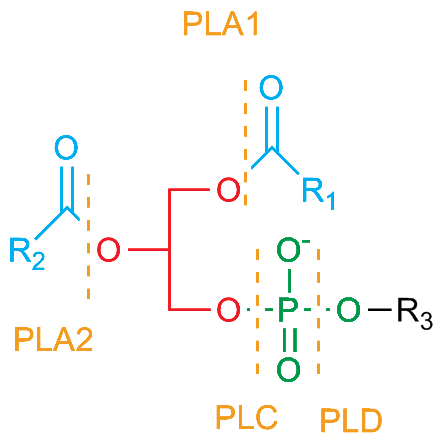phospholipase C

Phospholipase C (PLC) is a class of enzymes that cleave phospholipids just before the phosphate group.
It is most commonly taken to be synonymous with the human forms of this enzyme, which play an important role in eukaryotic cell physiology, in particular signal transduction pathways. Thirteen kinds of mammalian phospholipase C are classified into six isotypes (β, γ, δ, ε, ζ, η) according to structure.
PLC cleaves the phospholipid phosphatidylinositol 4,5-bisphosphate (PIP2) into diacyl glycerol (DAG) and inositol 1,4,5-trisphosphate (IP3). DAG remains bound to the membrane, and IP3 is released as a soluble structure into the cytosol. IP3 then diffuses through the cytosol to bind to IP3 receptors, particular calcium channels in the smooth endoplasmic reticulum. This causes the cytosolic concentration of calcium to increase, causing a cascade of intracellular changes and activity. In addition, calcium and DAG together work to activate protein kinase C, which goes on to phosphorylate other molecules, leading to altered cellular activity.























